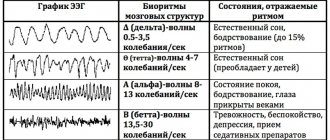A person’s internal dialogue with himself or with someone else is a phenomenon familiar to everyone. “Advanced esotericists” strive to stop it at all costs, regarding it as a thing that is definitely harmful. There are also those who use internal dialogue as a technique that allows them to give the necessary answers to pressing questions. What it really is and whether it’s worth getting rid of it - let’s find out.
The benefits of turning off internal chatter
When a modern person stops his internal dialogue, he becomes himself. This is a fundamental condition that in itself changes life for the better. Want to know when we make the right decisions? Then, when we stop the internal dialogue with ourselves, because it to some extent interferes with the objective perception of reality. Those. with internal dialogue as an intermediate link, we do not perceive reality as it is, but through the prism of words. Reality is described, as if squeezed into words, becoming a stripped-down and distorted version of itself. There is a kind of blocking of the ability to see the world beyond the ideas about this world.
Having hung a label in the form of a name on an unfamiliar phenomenon or object, people in most cases calm down and begin to perceive the novelty as something ordinary and familiar. Although just knowing the name does not advance understanding one millimeter.
Rational use of mental resources.
If internal dialogue is purposeful and completely manageable, it can be useful. But loading the mind with constant chatter means unjustifiably using one’s own mental resources, forcing the mind to support unnecessary and costly processes. Speaking thoughts to yourself takes a lot of energy. You will understand this when you learn to stop them.
Speed of thinking.
And that is not all. Internal dialogue greatly, greatly slows down the speed of thinking. If you have sufficiently practiced meditation or studied this issue, then you know one feature of the thinking of modern people. Thoughts appear in the head as concepts, as understanding, as knowledge. And then the mind turns conceptual thoughts into words - we essentially say to ourselves what we already know. Doesn't seem entirely rational? But that's how it is! It is very irrational and incredibly slow thinking to duplicate ready-made thoughts with “mental words.”
The importance of controlling self-talk
It seems like a simple task - to think correctly, not to be distracted by trifles. And this is just the tip of the iceberg.
If a person makes a request and receives a response for a very long time, he is inclined to think that he has not achieved the result. Understanding requires results here and now, but in practice, it turns out that the brain simply does not allocate resources for this.
Often confirmation of brain overload is the appearance of answers in the morning, or 2-3 days after the request is made.
Control is also important when managing energy.
If a person’s brain is occupied 100% with different thoughts, and he is given the task: “Direct energy to that place!” The brain simply will not accept this task for execution, it will put it in a queue, it is fully loaded. The person will think that he cannot do this and “give up.”
When the brain frees up resources to complete a task, the person will often be busy with another, and will not notice the result, because he does not expect an answer to the first task.
Techniques based on awareness of the moment “here and now”
Concentration on breathing
Having taken a comfortable position, begin to focus on your breathing (inhalations and exhalations). There is no need to control your breathing.
In order to experience the moment “here and now” you first need to relax
Look around and see what surrounds you, what is happening around you, what sounds and smells are in the air, pay attention to what position you are in
Walking power on Castende
Thinking about our affairs and problems on the go, we stop paying attention to the process itself. This technique helps to take walking out of automatism.
To perform this, bend your knees slightly and clench your hands into fists. Keeping your hands at your waist, simply walk forward, looking 4-5 meters ahead of you. When this position becomes familiar to you, it needs to be changed.
Learn more about meditation techniques in the context of the phenomenon of consciousness. What are deep and transcendental meditations that will perfectly complement the practice of stopping VD.
Learn how to develop the gift of clairvoyance and lift the veil of the future here. Development of extrasensory clairvoyance abilities.
VD stop. What is internal dialogue?
“Internal dialogue (ID) is a term in psychology that describes the process of continuous internal communication between a person and himself. One of the elements that ensures the dialogism of self-awareness is reflection—the subject’s turning to his own state and experience. Internal dialogue is the result of the presence within the consciousness of several subjects of communication at once. One possible explanation lies in the field of transactional analysis; internal dialogue can be explained as the interaction of different ego states (inner child, inner adult and inner parent). The term is used in esoteric teachings, including the books of Carlos Castaneda, to describe a technique for achieving an altered state of consciousness."
(Wikipedia)
“We constantly talk to ourselves about our world. In fact, we create our world with our internal dialogue. When we stop talking to ourselves, the world becomes the way it should be. We renew it, we give it life, we support it with our internal dialogue. And not only this. We also choose our paths according to what we tell ourselves. So we repeat the same choice again and again, until we die. Because we continue the same internal dialogue. The warrior is aware of this and strives to stop his internal dialogue.”
(Carlos Castaneda "Wheel of Time")
“The main obstacle for a warrior is internal dialogue: this is the key to everything. When a warrior learns to stop it, everything becomes possible. The most incredible projects become feasible.”
(Carlos Castaneda "Wheel of Time")
Psychologist Sergei Klyuchnikov
cantrium.com | MySuomi.com | HELSINKI | TourMANN.com
Anyone who has heard about the internal dialogue in the mind and wanted to stop it has probably encountered a serious obstacle within himself. What do we face when we begin to more closely observe what is happening in our heads every second, as soon as we stop actively focusing on solving everyday problems?
With a chaos of thoughts, words, images and feelings that rotate in the space of consciousness, repeating themselves, alternating with each other and entering into new combinations according to the strangest and most mysterious logic.
Who started this chaos in the consciousness of an individual and humanity, and for what purpose?
Many smart people have thought about this topic, but, as a rule, without success.
Western philosophers preferred to think, to create theories and images that explain this world and life, rather than to comprehend the nature of the mind.
In the East, the study of the essence of the thought process was treated with much greater respect. They didn’t just theorize there, but put real tools in people’s hands that would allow them to understand what the mind is, what its structure is and why it is restless.
Let’s try to use the method of eastern introspection and look into the deep laboratory of consciousness that generates chaos of thoughts. What will appear before our inner gaze?
The very first thing a person realizes during initial self-observation is that there is a continuous conversation or some kind of internal dialogue .
It’s as if someone is commenting on everything - both life events and emerging thoughts, and in a chaotic and incoherent form.
The flow of words, phrases, thoughts, exclamations goes on almost continuously, sometimes a little louder, sometimes a little quieter. The speed, intonation, and emotional coloring of internal chatter change, but it itself remains a constant of consciousness.
Who and with whom is having a conversation inside our consciousness? This question is not easy to answer, even if you spend some time listening to your inner conversation.
Persistent self-inquiry will lead you to understand that certain inner voices are speaking. Some of them belong to you, and there are several of them, and they relate to your different moods and facets of your personality.
Another group of voices belongs to strangers - friends, enemies, acquaintances. As a rule, these voices are quite significant to you and you are not indifferent to them.
You may actively dislike them, argue with them, but from time to time you seem to identify with them and speak as if on their behalf.
Then something in you begins to speak of your personality again.
Our mind, if you listen closely, is like a transistor radio that speaks in different voices when it is tuned.
The third group of voices belongs to unknown people who in some strange way “climbed” into our heads and talk to us in different intonations.
But if mental chaos consisted simply of a verbal background and a cacophony of internal voices, then it would be easier to deal with it.
In addition to words and phrases, a variety of images and pictures flash, a kaleidoscope of some faces, landscapes and places where we have been and have not been, objects and spots of light are spinning.
Such an internal dialogue or radio report from the mental center turns into a kind of movie, shot in the genre of a video clip.
Sometimes all this disappears, and consciousness for some time plunges into the gray twilight of psychological sleep, and we lose the sense of continuity of inner life.
Then the radio turns on, and the silence again gives way to a conversation in the form of an internal dialogue with an imaginary interlocutor in the invisible presence of other viewers and listeners.
Why do we need to carry in our mental space a huge amount of rubbish and images of people with whom, it turns out, it is so important to bring this endless dispute to the end?
It would seem like a completely unnecessary extra burden, but try to get rid of it with the help of strong-willed self-command. You won't succeed, no matter how hard you try.
The reason it fails is that self-talk is an integral part of us. We are connected to the chaotic mental space by a thousand threads and, in fact, we are fish accustomed to living in this muddy, constantly seething layer of water.
Speaking in the language of esoteric philosophy, internal dialogue is an uncontrollable vortex of mental matter, rotating in his consciousness at a speed individual for each person.
Partially we brought this vortex from past lives, partially it is created by the chaotic substance of that part of the noosphere in which we settled in this incarnation.
The mental sphere of planet earth is for the most part in a state of chaos.
The consciousness of every person embodied on earth is surrounded by this foaming and seething substance, and since it is initially largely permeable and open to all energetic winds, various influences and currents enter the mind and create ripples of thoughts.
To become independent from this chaotic subtle environment, a person must learn to discipline his mind so much that he stops passing through himself those subtle waves and influences that are harmful or excessive for him.
To do this, it is useful to understand the structure of the mind conducting internal dialogue and to know the levels of internal dialogue .
If you look closely and listen to your mental loudspeaker in your consciousness, then, first of all, a person will encounter the most chaotic layer of thoughts, a kind of mental foam separating the ocean of inner consciousness from the outer world.
The next, deeper level of dialogue reveals points of crystallization in the general space of chaos.
These are the main topics that a person likes to think about.
One can liken these points of crystallization of chaos to certain whirlpools or monochromatic eddies in the mental ocean.
But it should be remembered that behind every thought, idea, intellectual program there is one or another desire, motive, emotional-volitional attitude, which requires reflection and subsequent implementation in actions.
The mind acts as an intermediary between the external world and desires aimed at getting something from this world.
He chooses between various thoughts the best opportunities for their implementation. The dialogue between oneself and the outside world is conducted by desires, and the mind voices and clarifies different points of view and action programs in the form of images.
For example, two desires struggle in a person - to make an expensive purchase and the desire to save money. When a struggle of motives arises, the mind becomes a translator of them from the subconscious-energy sphere to the sphere of clear consciousness.
He creates arguments for both sides, gives arguments, creates images and compares them.
And finally, another level of internal dialogue that occurs in the human mind - the dialogue between the mind and body.
The body constantly transmits signals from itself and the external world with which it comes into contact, to the nervous system, to the brain and, ultimately, to consciousness.
These are signals of pleasure or displeasure, orientation, assessment of the environment, notification of physiological needs, and finally, a continuous signal of confirmation of one’s being and structure (in psychological and psychiatric science they prefer to talk about the “body diagram”).
Body signals force the mind to constantly respond to physiological impulses, think about why the right leg hurts, or dream about a delicious lunch if the body is hungry.
Intense dialogue with the body and the habit of yielding to its impatient orders forms in a person a materialistic worldview and an egoistic sense of self, and makes it difficult to achieve silence.
The internal dialogue of an unenlightened person in all its forms and manifestations creates subtle psychoenergetic noises, which for the receptive consciousness of the initiate, spiritual master and yogi merge into one negative background, drowning out the voice of silence.
The more intense this dialogue is, the stronger the person’s disconnection with his inner spiritual being. If you want to move closer to silence, look for opportunities to stop the internal dialogue .
Real stopping of internal dialogue means synchronizing the work of the body, breathing, emotions and mind into a single subtle sensation, in which a person for some time ceases to perceive these parts of himself as something separate and living on its own.
Let’s ask ourselves the question: why do we need to stop the internal dialogue , why do we need to expend considerable effort, and what will a person get as a result?
As a person who has been engaged in meditative practice for 30 years, I will express my thoughts on this matter.
What will happen to a person who does not engage in this practice and whose mind remains chaotic?
Absolutely nothing will happen to him, he will not get sick or die, and he will not necessarily go to hell for mental chaos. It will just work as erratically as it worked before. And this will lead to the fact that such a person is unlikely to achieve anything significant in any mental area.
After all, some poets or artists who had never engaged in meditative practice by nature were able to fall into selfless creative ecstasy, in which the mind stopped for a while and they comprehended some great truths, turned on intuition, and launched the creative imagination.
But a dull official or executive who lives “without a deity, without inspiration” will never learn anything great and deep, but will be content with superficial, banal truths.
In addition, a person who does not know how to stop his mind will be deprived of the excess vitality that helps him carry out serious life tasks.
Stopping internal dialogue gives a person great opportunities.
1. It disciplines the mind and thinking, helping those who have learned to do this to think much more clearly than an ordinary person.
2. It helps a person see himself much more accurately and deeply.
3. It increases a person’s psychoenergy and makes him much healthier and stronger.
4. It turns on the channel of intuitive cognition in a person, which helps to understand his confused internal state
5. It helps a person get closer to the spiritual world.
Therefore, let’s try to understand how you can stop the internal dialogue.
One of the most effective methods for stopping internal dialogue was suggested to me by one experienced follower of Krishnamurti.
We had a confidential conversation, during which we shared our meditation experiences with each other. I told him about my difficulties in stopping internal dialogue with my will.
In response, he advised me to try to understand the nature of the mind. “But I already know that it is unstable in an unenlightened state and empty-motionless in an enlightened one,” I answered. — How exactly will this understanding help me stop my mind?
My interlocutor, after thinking, replied that it was quite possible that I did not fully understand this reason.
One must not just empty the mind, but try to comprehend its nature and structure, carefully observing how thoughts are born. When you see what the mind is, you will understand how to stop its work - that same buzzing of internal dialogue that interferes with silence.
Under the influence of this conversation, I once again re-read all the authors who talk about stopping the mind. Krishnamurti, Vivekananda, Yogananda, Aurobindo, Castaneda, Ram Dass...
In addition to them, I also looked at the classics of the spiritual path - Orthodox elders, Buddhist masters, books of Agni Yoga. From what I read, I realized that in literature and spiritual practice there are two main methods of stopping mental dialogue.
The first involves subtle pressure on thought and the gradual suppression of any types of mental activity with the help of soft will.
The other is based on methods of careful examination of the mind and detached observation of the thoughts arising in the mind.
I periodically resorted to both methods, considering both ways to be very effective. The advice of a follower of Krishnamurti was to enhance self-observation by becoming aware of what you are observing.
When I thought more deeply about this type of introspection, I saw that it was somewhat different from most of the “choiceless awareness” methods recommended by many modern authors.
At first glance, “understanding observation” is less free than looking at oneself without any attitude.
On the other hand, it is very close to Gurdjieff’s idea of self-remembering and differs from it only by shifting the emphasis from focusing attention on one’s “I” (self-remembering) to carefully studying one’s thoughts and the mind that generates them.
When I tried to observe the stream of my consciousness in a different, “understanding” way, I was amazed at how different the shades of sensations were.
First, you begin to see that the internal dialogue that occurs between different parts and structures of yourself (for example, between bodily sensations and feelings) is actually happening in the head.
It is the brain that recognizes signals coming from the body. If he stops doing this, we simply will not be able to recognize them. It is the head that labels any sensation as “pleasant or unpleasant.”
Secondly, understanding allows us to understand what our mind is and why it continuously generates thoughts.
Until I did this work, I did not understand the words about the mind that were told to us in the Indian ashram. “Your mind is a very, very ancient mind, the essence of which is changeable, and which will always distort reality,” the monks who conducted the classes explained to us. Tibetan lamas compare the mind to a dishonest politician who constantly lies.
To me, a person with a strong mentality and good logic, such definitions of intelligence seemed an exaggeration.
However, after I examined my mind with a close, understanding gaze, I saw that behind the logical structures there was some kind of elusive, volatile, constantly distorting reality basis.
Slippery like a jellyfish, unstable like a child learning to walk, this basis of the mind is essentially an illusion.
Its nature is such that it cannot help but move, continuously generating waves of thoughts. And this eternal ripple crushes and distorts the reflection of truth in the mirror of consciousness.
As soon as you understand and live this truth, which helps you see what the mind is, it begins to calm down.
The chaotic internal dialogue subsides, the natural integrity of consciousness returns, and with your whole being you enter into a completely different dialogue with the Almighty, with Divine Nature, with the Cosmos.
Even a partial stop of the internal dialogue for a very limited time already gives very important results.
You have the ability to see the deep landscape of your consciousness, which has always been hidden from you by the “gray clouds” of your swirling thoughts.
You begin to penetrate into yourself, which means that the controllability of all mental processes and states increases.
Life energy, fruitlessly lost during internal dialogue , often manifested as a war with oneself, begins to accumulate.
Your consciousness, which previously resembled the Russian parliament, with its endless exhausting debates, becomes an elastic integral field, a flourishing kingdom or monarchy of the spirit.
It is difficult to stop the internal dialogue completely - this will already stop the wheel of Samsara. But it is quite possible to take the first steps towards stopping. You will quickly appreciate the benefits of this condition.
Capturing internal chatter
This exercise can be taken in both static and dynamic meditation. The first thing you need to start with is fixing your internal chatter.
Listen to what is happening under your skull. When you are busy with some kind of mechanical work, you may not hear any dialogue within yourself.
The same applies to situations of your active communication, when your attention is directed to your interlocutors and you simply cannot hear anything.
Especially if you have no experience in self-observation. Make a little effort on yourself and turn off your attention from the outside world for a while. Listen to yourself and your consciousness.
You will definitely catch yourself in the internal chatter that happens inside of you on its own, without any participation in your head. Try to hear the intonation with which different words and fragments of phrases are pronounced in your mind.
Who is speaking inside you?
The next level of listening to your inner dialogue is identifying the voices or persons speaking within you.
Who owns these voices?
Who speaks on your behalf or on their behalf in your head?
Try to understand how many internal interlocutors you have?
What are they talking and arguing about?
What are their positions?
In what direction is their will directed?
Observe yourself, listen to yourself and try to understand what you are made of?
Try turning down the volume
Listen to yourself and determine the volume of the voices speaking inside you. If they speak very loudly and even shout in your head, ask them why they do this?
Doesn't the other subpersonality and part of you hear what the other part is saying? Imagine that you are listening to a radio where there is a broadcast and several interlocutors are talking loudly at the same time.
You have a great way to reduce the sound volume - turn the receiver knob. Imagine that you are still holding your hand on this knob and by turning it, you seem to remove the sound from yourself and make it quieter.
Turn the knob and reduce the volume so much that the source of the sound with all the voices seems to move several meters away from you.
Tune in to the feeling that the internal dialogue is becoming quieter, and gradually the voices merge into a single weak hum, in which it is impossible to discern the meaning of what is being said. Continue to turn down the volume of your internal dialogue as much as possible.
Understand the nature of mind
Begin to pay close attention to your state of mind. Outline the space where the mind operates. This is not only the head, but also the area of emotions coming from the torso and lower chakras.
The energy of desires and emotions rises up to the head area and affects the functioning of the mind. Observe carefully how this work occurs, trying to penetrate to the very core of the mind and its deepest basis.
Ask yourself, what is mind? To answer this question, try stopping the sphere of emotions and desires and focusing on the mental space.
If you are consistent and persistent, you will find nothing but open empty space in your mind.
Thus, by meditating on the mind, you will gradually discover the famous Chan truth - the nature of the mind is emptiness. This helps you better stop the internal dialogue.
Social Like
Empty mind
We often encounter the idea of silent thought in various paradigms of knowledge, which are still little known in the West.
Every day we catch ourselves thinking - literally. I don’t mean rational thinking, but ordinary thinking, beyond the control of reason. Mentally, we never stop talking to ourselves - this is what don Juan calls “internal dialogue” and the refusal of which is the central idea of his teaching.
Since this internal dialogue never stops, we believe that there is nothing more natural and necessary, we - albeit unconsciously - have no doubt that the cessation of this dialogue can only occur after death, that there is no absolutely empty, “silent” consciousness and can't be. This confidence is confirmed by the failure of individual attempts to stop this flow, to “close the brain.” The fact is that emptying consciousness requires the use of special methods, which also need to be continuously practiced.
Why do you need to stop the flow of thoughts?
And to go out into the real world, you need to stop these thoughts. I hope your “gurus” told you about this. That is, the main condition for stopping the flow of thoughts and internal dialogue is not contemplation of ANYTHING , but a return to the real world to enjoy life and have fun.
That's what they told you? No? How so?











